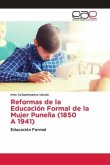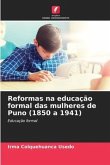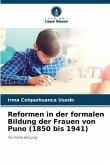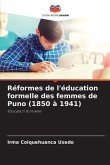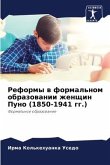At the end of the 19th century and throughout the 20th century, legislative measures were passed that shaped the organization, structuring and reformation of Peruvian education; although the poorest sectors of the population gained free and compulsory education at the elementary levels, this reorganization did not reflect or safeguard educational equity and equality between men and women.While the first normal school for boys was created in 1822, under a standard curriculum that would allow Peruvian men to develop critically and autonomously, in 1825, a gyneceo was opened, which was nothing more than a school for women, where "to educate is to pray and to teach is to preach" (Encinas, 1986). (Encinas, 1986). This educational scenario, not very encouraging, has not been alien to Puno women; ergo, this leads us to ask ourselves: What were the educational achievements obtained in the organization and reform of the formal education of Puno women and how has it transcended in her since her access during 1850 and 1941?
Bitte wählen Sie Ihr Anliegen aus.
Rechnungen
Retourenschein anfordern
Bestellstatus
Storno


